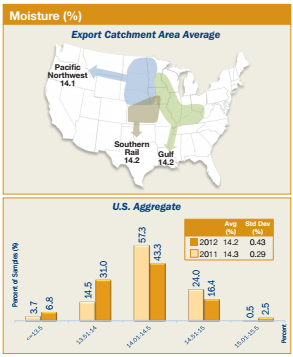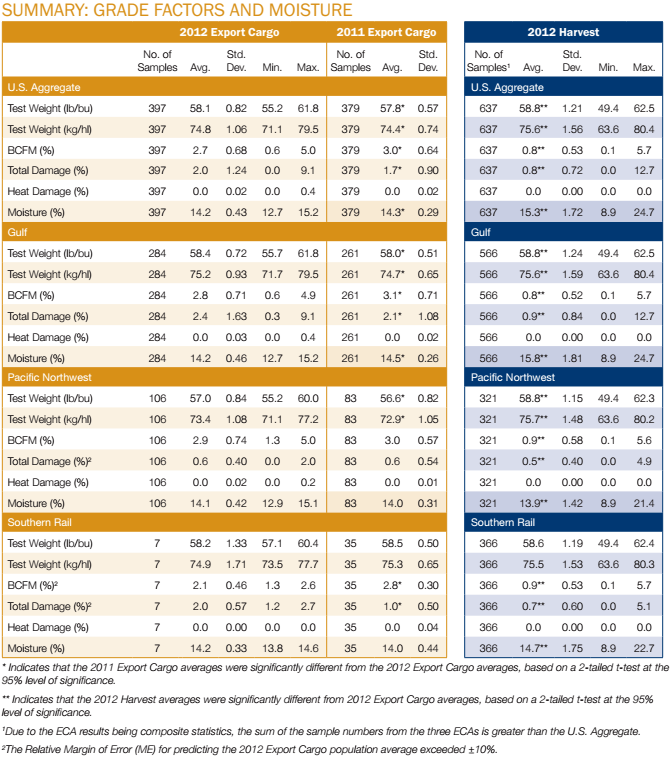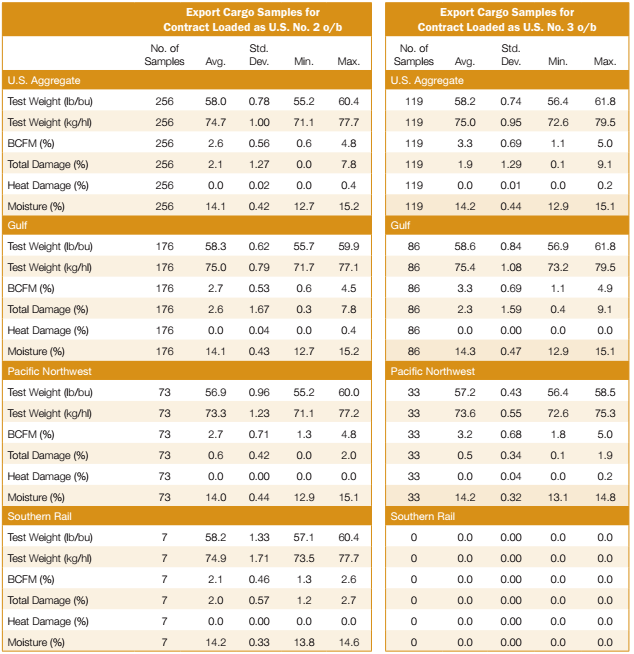B. Moisture
Moisture content is reported on all official grade certificates, but does not determine which numerical grade will be assigned to the sample. Moisture content is usually specified in the contract by the buyer, independent of the grade. Moisture content is important because it affects the amount of dry matter being sold and purchased. In addition, the average moisture level and variability in a shipment of corn affect its quality arriving at destination. Corn is typically stored in closed, nearly airtight holds during the ocean voyage, and few bulk carriers have the ability to aerate the grain mass during transit. This lack of aeration can create an ideal environment for pockets of high moisture to initiate microbiological activity. In addition, temperature variations in the grain mass can cause moisture migration, resulting in warm moist air condensing on colder surfaces of grain, near sidewalls, or on the underside of hatch covers, which can lead to development of spoilage or hot spots. Thus, uniformity of moisture content among sublots and average moisture values below 14.5% are important for minimizing the risk of “hot spots” developing during transit. “Hot spots” are small pockets of corn where the moisture content and temperature become abnormally higher than the average for the cargo.
HIGHLIGHTS
- U.S. Aggregate moisture content was only one tenth of a percentage point below that of last year (2011/12), despite the effects of the drought. However, variability was greater in 2012/13 than in 2011/12 (standard deviation of 0.43% in 2012/13 compared to 0.29% in 2011/2012), probably due to the number of extremely low moisture samples this year compared to previous. (6.8% were 13.5% or lower in 2012/13 compared to 3.7% in 2011/12).
- Moisture content decreased between harvest (15.3%) and export (14.2%) as a result of drying and conditioning in the market channel following harvest deliveries.
- Moisture content variability among samples decreased as the corn moved through the market channel as a result of drying and management to meet the export contract specifications.
- More than 80% (75.5% last year) of the samples had moisture contents of 14.5% or below, which indicates most cargoes will transport with little microbiological activity.
- Average moisture varied only slightly among ECAs.


